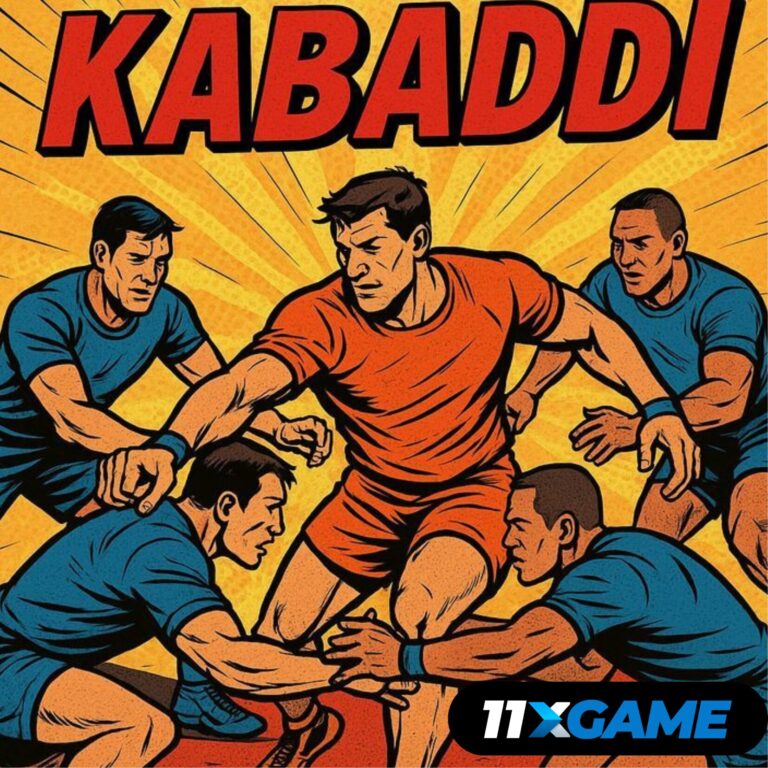How to Analyze Player Form & Team Stats Before Betting on Kabaddi
Kabaddi has surged in popularity in recent years, particularly with the rise of professional leagues such as the Pro Kabaddi League (PKL). For betting enthusiasts, kabaddi presents a unique challenge because the sport combines individual brilliance with team strategy, physical fitness, and psychological resilience. Betting without analyzing player form and team statistics is a gamble that can quickly erode your bankroll. This guide explores how to analyze player form and team stats before betting on kabaddi to make informed, strategic decisions.
Understanding the Basics: Why Stats Matter in Kabaddi Betting
Kabaddi may seem like a fast-paced, unpredictable game, but careful statistical analysis can uncover patterns that predict performance outcomes. Unlike football or cricket, where scoring events are more frequent and often involve multiple players, kabaddi outcomes rely heavily on the performance of individual raiders, defenders, and team coordination.
Key elements that make statistical analysis crucial in kabaddi betting:

- Player Impact: A single raider can change the match outcome in a few raids.
- Team Synergy: Defensive formations, tackle efficiency, and communication affect results.
- Match Context: Home advantage, travel fatigue, and scheduling can influence performance.
Understanding these factors helps bettors predict match outcomes more reliably.
Step 1: Analyzing Individual Player Form
When analyzing player form, you need to evaluate recent performance trends rather than rely solely on reputation. The top players may be inconsistent due to injuries, fitness, or tactical changes. Here’s a detailed breakdown:
1. Raider Performance Metrics
Raiders are the primary scorers in kabaddi. Key statistics include:
- Raid Points: Total points scored by the raider in recent matches.
- Raid Success Rate: Percentage of successful raids versus total raid attempts.
- Super Raids: Occasional high-scoring raids can shift momentum.
- Consistency: Examine performance across multiple games, not just a single standout match.
Example: If Player A has 40 raid points in the last five games but a success rate of only 35%, the raw point total may be misleading. A high success rate with moderate points often indicates a more reliable performer.
2. Defender Analysis
Defenders are equally important as raiders. Key statistics include:
- Tackle Points: Number of successful tackles made.
- Tackle Success Rate: Percentage of successful tackles out of total attempts.
- Super Tackles: Tackles that occur when the defending team is down a player, crucial for momentum.
- Positional Strength: Certain defenders excel in specific positions (corners, covers, or centers).
Example: A corner defender with a 75% tackle success rate consistently pressures raiders, often reducing opposition raid points significantly.
3. Recent Fitness and Injury Updates
Physical condition is critical in kabaddi. Even minor injuries can affect agility, speed, and tackling strength. Bettors should track:
- Player injury reports from official team sources.
- Recovery status and previous match minutes.
- Fatigue from consecutive matches or international travel.
Step 2: Evaluating Team Stats
While individual performance is critical, kabaddi is fundamentally a team sport. Understanding team statistics provides insights into overall strategy and likely match outcomes.
1. Team Raid and Defense Efficiency
- Raid Efficiency: Total raid points divided by total raids. Higher efficiency indicates better scoring potential.
- Defense Efficiency: Successful tackles divided by total tackle attempts. Strong defense reduces opposition scoring opportunities.
Example: Team X may have the top raider but poor defensive efficiency. Against a team with balanced raiders and defenders, Team X may struggle.
2. Head-to-Head Performance
Historical performance against a specific opponent is informative:
- Some teams consistently dominate certain opponents due to tactical advantages.
- Head-to-head stats can reveal weaknesses in defensive formations or raiding strategies.
Example: Team Y may have lost three consecutive matches to Team Z due to ineffective corner defense.
3. Home vs. Away Performance
- Teams often perform better at home due to crowd support and familiarity with the arena.
- Travel fatigue affects endurance, particularly in long tournaments.
Example: A team winning 80% of home matches but only 40% away suggests that betting on them in away games carries higher risk.
4. Momentum and Streaks
- Teams on winning streaks often carry confidence, cohesion, and rhythm.
- Conversely, losing streaks can indicate morale issues or tactical weaknesses.
Step 3: Combining Player Form and Team Stats
Betting decisions are most reliable when player form and team stats are analyzed together. A top raider in a poorly performing team may not secure a win, while a solid team with consistent performers can outperform expectations.
Key Combinations to Analyze:
- Raiders + Team Raid Efficiency: A top-performing raider in a team with high raid efficiency increases the likelihood of total match points.
- Defenders + Opponent Raiders: Strong defenders against high-scoring raiders can shift the match dynamics.
- Team Form + Player Fitness: A team with recent wins and healthy players often maintains performance consistency.
Example: If Player B (top raider) is 80% fit after recovering from injury, and Team Z has won 4 of the last 5 matches, betting on Team Z is more rational than relying on Player B alone.
Step 4: Using Advanced Stats and Data Sources
Modern kabaddi provides access to advanced analytics:
- Points Per Match (PPM): Measures average contribution of individual players.
- Tackle Impact Score: Advanced metric showing defenders’ effectiveness in crucial match situations.
- Raiding Consistency Index: Highlights raiders who score regularly versus sporadic performers.
Reliable data sources include:
- Official League Websites: PKL official stats and player profiles.
- Sports Analytics Platforms: Provide detailed metrics and historical comparisons.
- Social Media & News Outlets: Real-time updates on injuries and lineup changes.
Step 5: Incorporating Contextual Factors
Stats alone cannot predict outcomes perfectly. Bettors should consider contextual factors such as:
- Match Type: League vs. playoffs – teams may alter strategies.
- Team Composition Changes: Last-minute substitutions can impact cohesion.
- Psychological Pressure: High-stakes matches may affect rookies or inconsistent players.
- Weather and Arena Conditions: Although indoor arenas limit weather impact, floor conditions can affect grip and movement.
Step 6: Betting Strategies Based on Analysis
Once player form and team stats are analyzed, bettors can apply strategies:
- Focus on Consistency: Bet on teams and players with proven consistency rather than one-off performances.
- Avoid Bias: Don’t favor star players blindly; evaluate actual performance metrics.
- Diversify Bets: Spread wagers across multiple matches or types (match winner, total points, individual player points) to manage risk.
- In-Play Betting: Real-time stats allow smarter bets during live matches based on actual performance trends.
- Value Betting: Identify odds that underestimate strong teams or consistent players based on your analysis.
Common Mistakes Bettors Make in Kabaddi
- Ignoring Form: Betting on star players despite recent poor performances.
- Overemphasizing Head-to-Head: Past dominance doesn’t always predict current outcomes.
- Neglecting Team Strategy: Ignoring defensive formations and tactical changes.
- Chasing Losses: Increasing bets impulsively without analyzing stats.
- Ignoring Context: Playing without considering player fitness, match stakes, or arena conditions.
Tools to Help Analyze Kabaddi Stats
- Spreadsheet Models: Track raid points, tackle success, efficiency metrics.
- Statistical Software: Programs like R or Python for predictive analysis.
- Betting Platforms with Analytics: Some betting sites provide live data and historical stats.
Step 7: Practical Example of Pre-Match Analysis
Imagine a match between Team A and Team B:
- Team A:
- Top raider: 45 points in last 5 games, 70% raid success rate.
- Defense: 65% tackle success, strong corners.
- Recent form: Won 3 of 5 matches.
- Team B:
- Top raider: 50 points in last 5 games, 55% raid success rate.
- Defense: 50% tackle success, weak left corner.
- Recent form: Lost 4 of 5 matches.
Analysis:
- Team A has balanced offense and defense, higher consistency, and better defense against raiders.
- Betting on Team A as match winner is statistically favorable.
- Additional bets: Consider over/under points based on Team A’s efficient raid scoring and Team B’s weak defense.
Conclusion
Analyzing player form and team stats is essential for responsible and strategic kabaddi betting. Bettors who evaluate individual performances, team efficiency, historical data, and contextual factors gain a significant edge over casual or impulsive wagers. By combining statistical insight with informed strategies, it is possible to make smarter bets and minimize losses.
(This article is for informational purposes only. Gambling involves risk. Please bet responsibly. Always check local laws before playing & follow the law.)
Final Thought:
Successful kabaddi bettors understand that numbers, patterns, and context matter more than intuition. Studying player form and team stats transforms betting from a game of chance into a disciplined, analytical process.
Frequently Asked Questions (FAQ)
Q1. How often should I check player form before betting?
A1. Track player form in at least the last 5-10 matches to identify consistent performance trends.
Q2. Are team stats more important than individual player stats?
A2. Both matter. Individual brilliance can change outcomes, but team synergy often determines match consistency.
Q3. Can I rely on historical head-to-head records?
A3. Only partially. Past results indicate tendencies, but current form, injuries, and tactics often override history.
For more educational resources and responsible gaming tips, visit 11xGame to stay informed and safe while enjoying your favorite sports.






